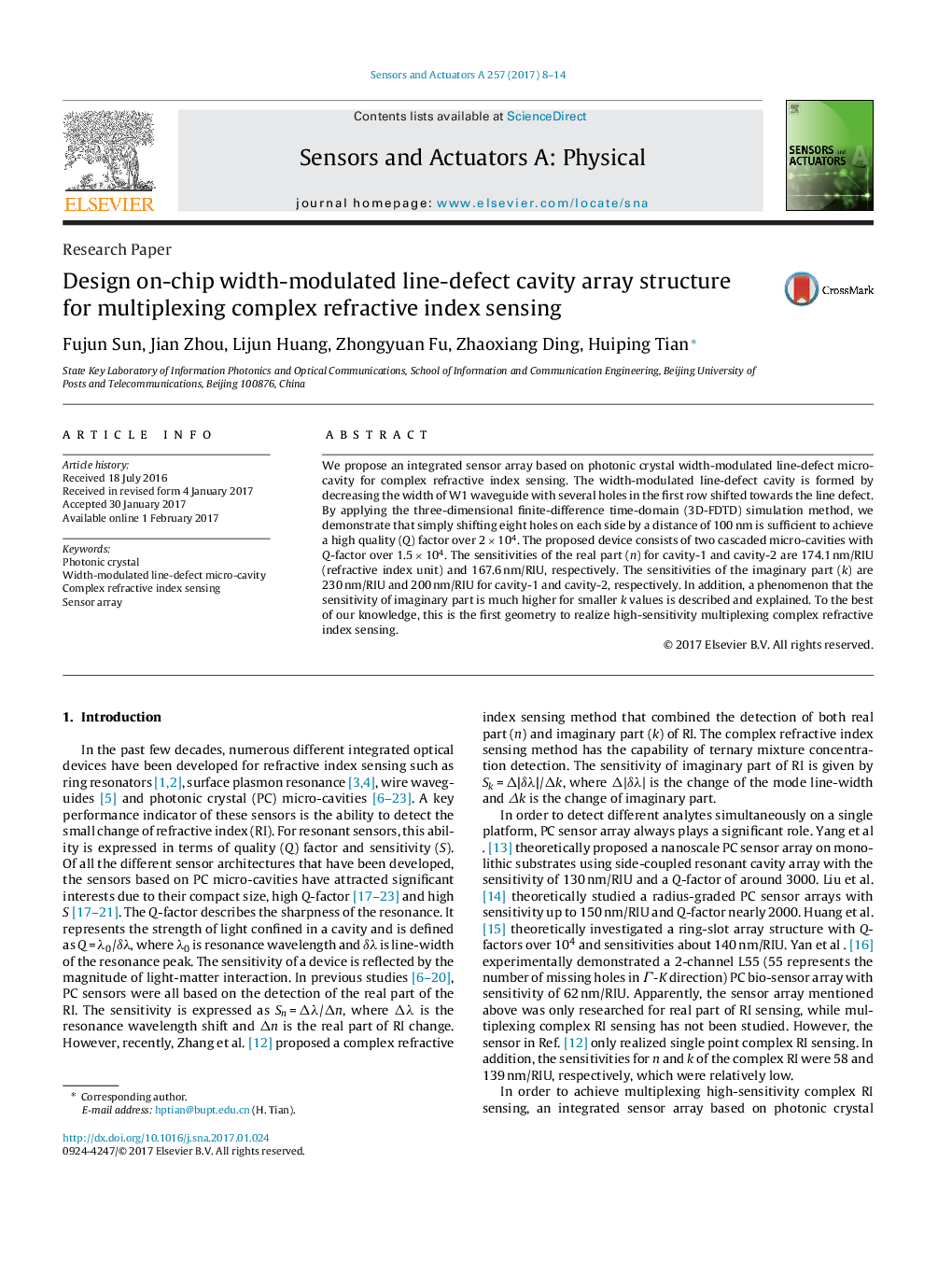| Article ID | Journal | Published Year | Pages | File Type |
|---|---|---|---|---|
| 5008426 | Sensors and Actuators A: Physical | 2017 | 7 Pages |
â¢Sensor array based on photonic crystal width-modulated line-defect micro-cavity.â¢The first geometry to realize multiplexing complex refractive index sensing.â¢Two cascaded micro-cavities with Q-factor over 15,000.â¢The sensitivity of the real part over 167.6 nm/RIU.â¢The sensitivity of the imaginary part over 200 nm/RIU.
We propose an integrated sensor array based on photonic crystal width-modulated line-defect micro-cavity for complex refractive index sensing. The width-modulated line-defect cavity is formed by decreasing the width of W1 waveguide with several holes in the first row shifted towards the line defect. By applying the three-dimensional finite-difference time-domain (3D-FDTD) simulation method, we demonstrate that simply shifting eight holes on each side by a distance of 100Â nm is sufficient to achieve a high quality (Q) factor over 2Â ÃÂ 104. The proposed device consists of two cascaded micro-cavities with Q-factor over 1.5Â ÃÂ 104. The sensitivities of the real part (n) for cavity-1 and cavity-2 are 174.1Â nm/RIU (refractive index unit) and 167.6Â nm/RIU, respectively. The sensitivities of the imaginary part (k) are 230Â nm/RIU and 200Â nm/RIU for cavity-1 and cavity-2, respectively. In addition, a phenomenon that the sensitivity of imaginary part is much higher for smaller k values is described and explained. To the best of our knowledge, this is the first geometry to realize high-sensitivity multiplexing complex refractive index sensing.
